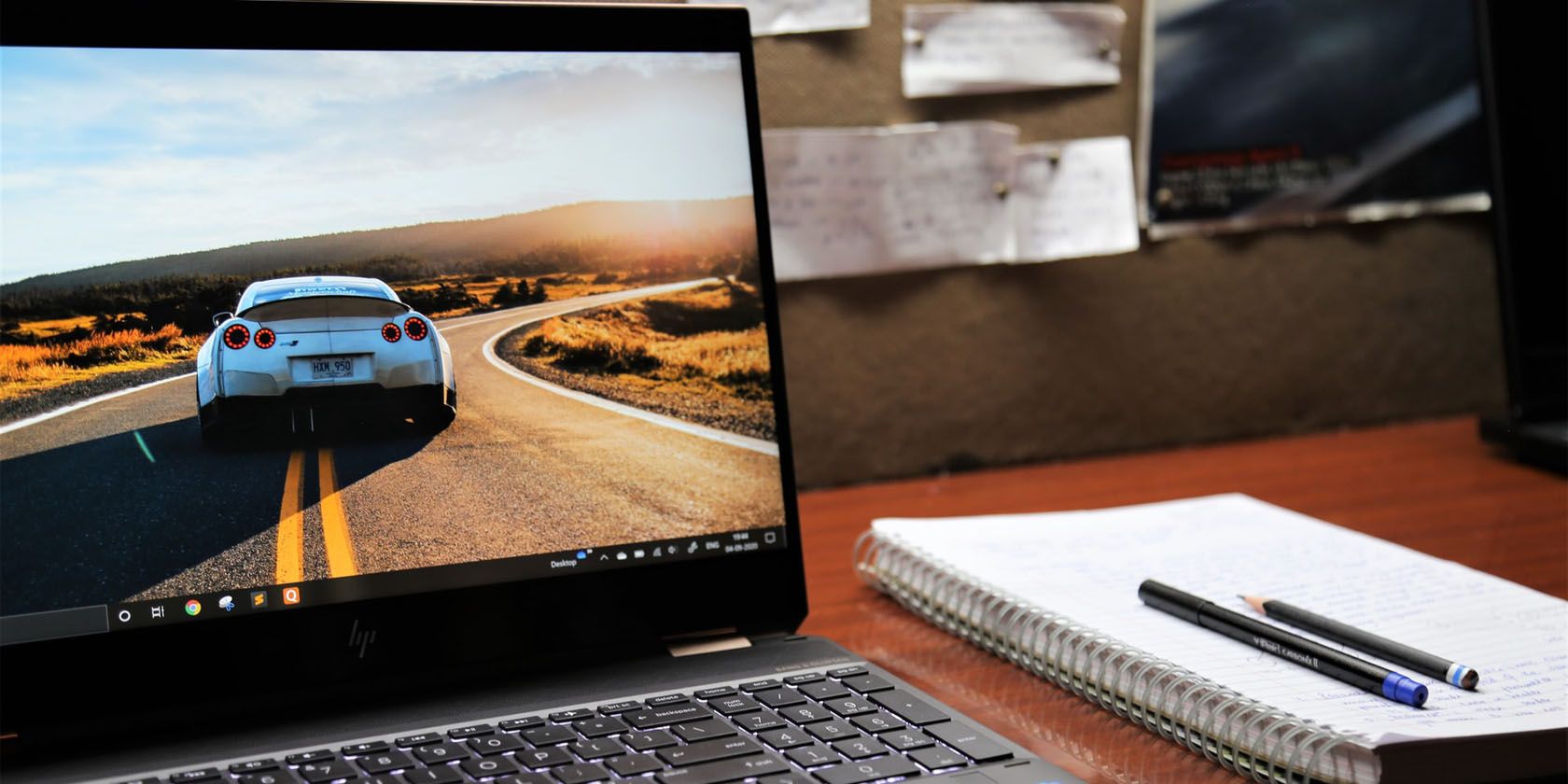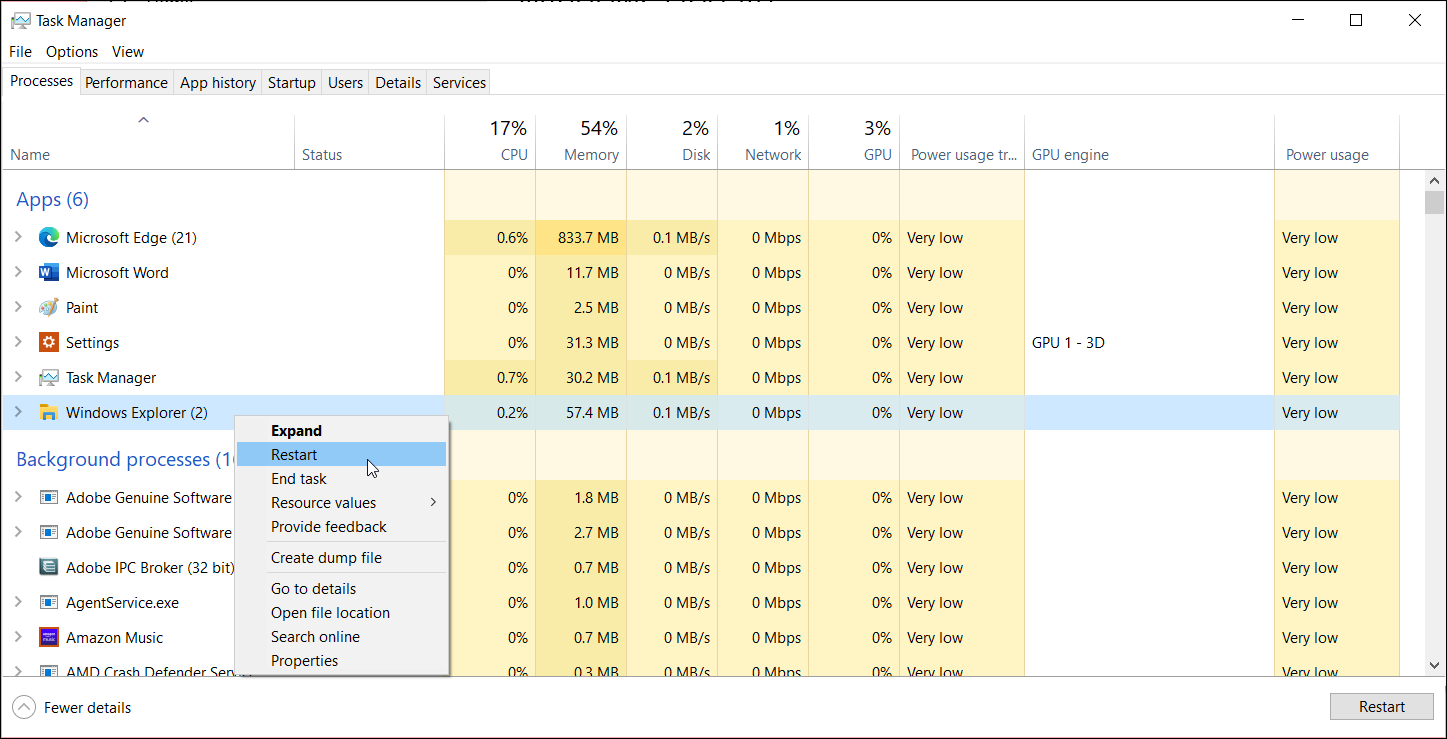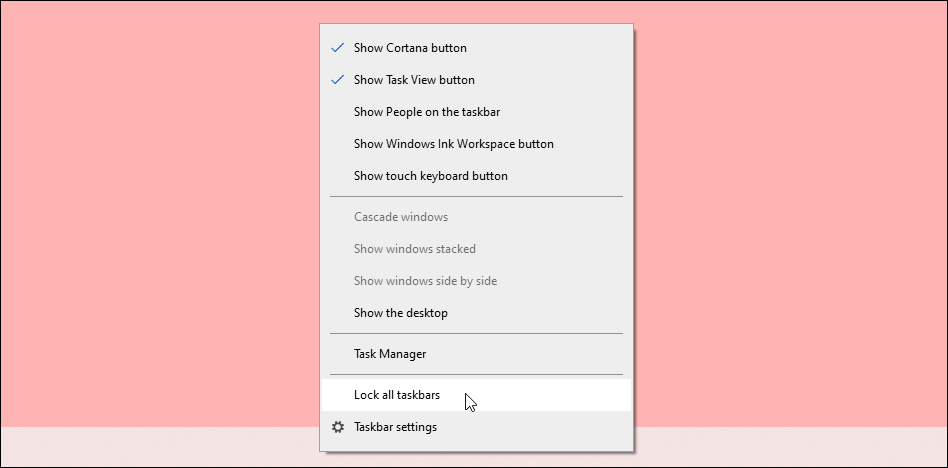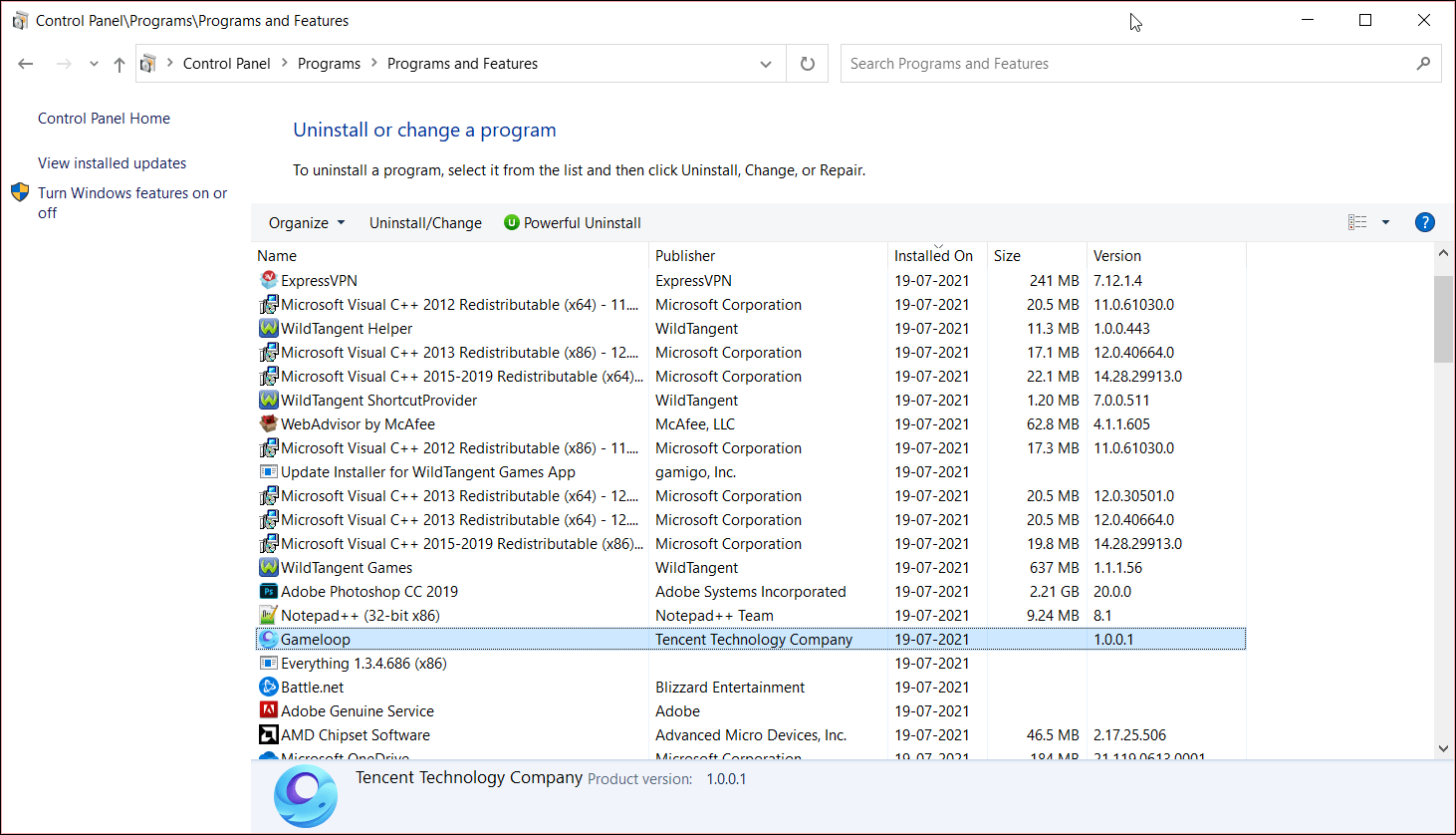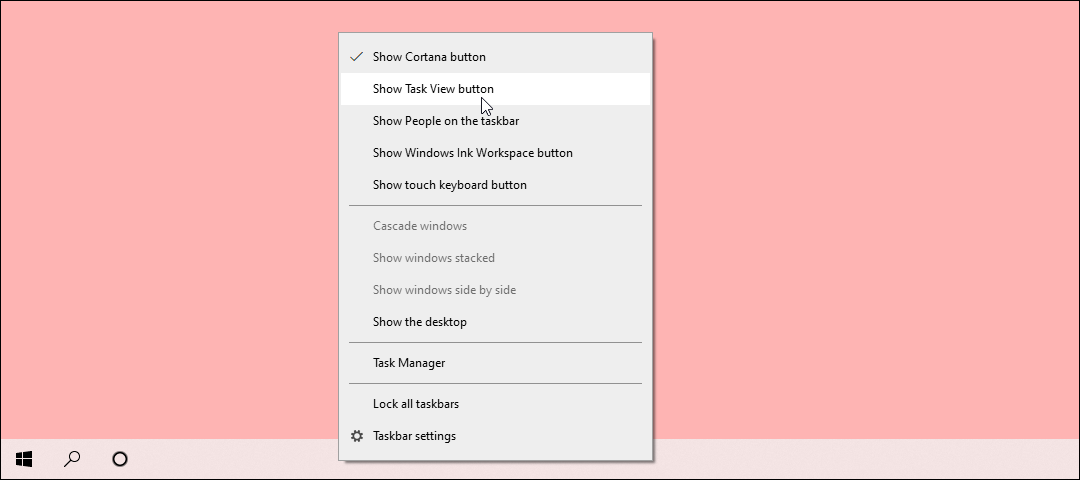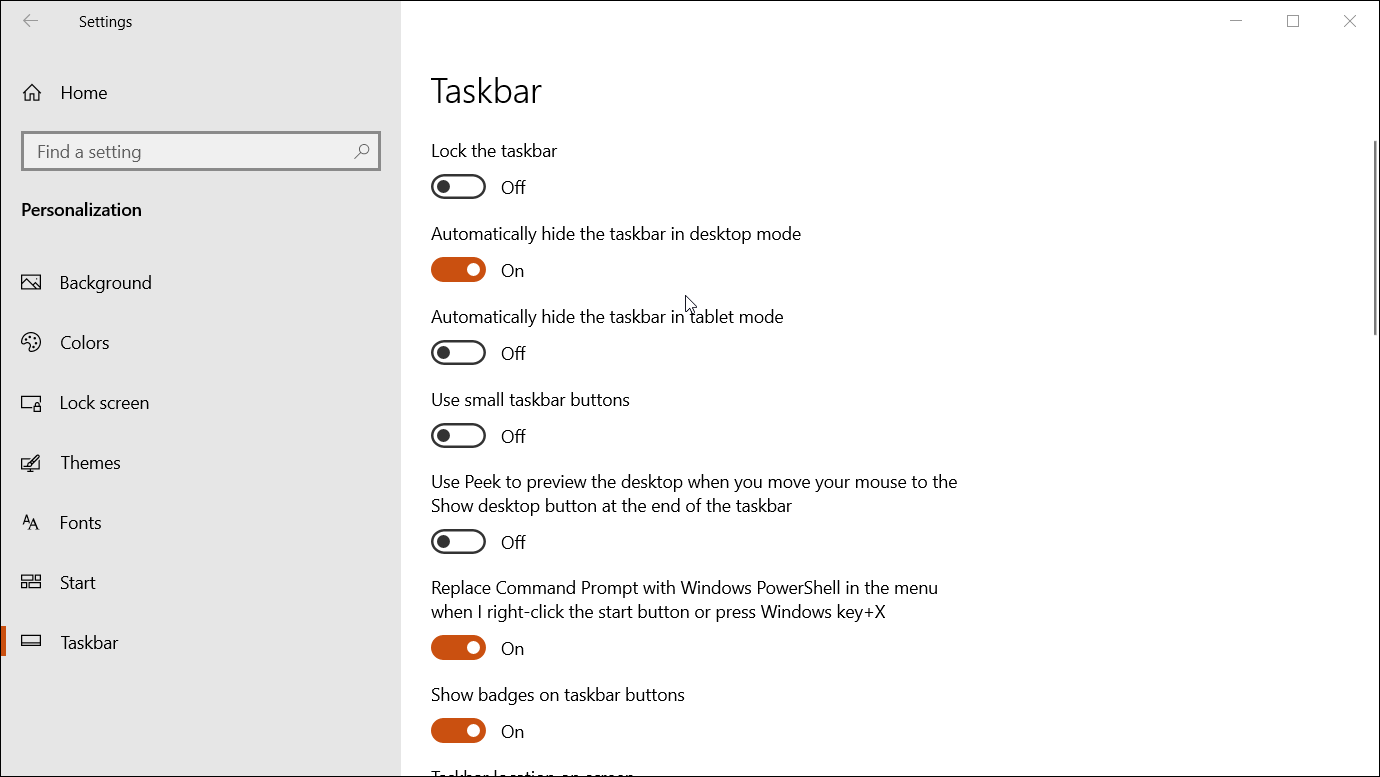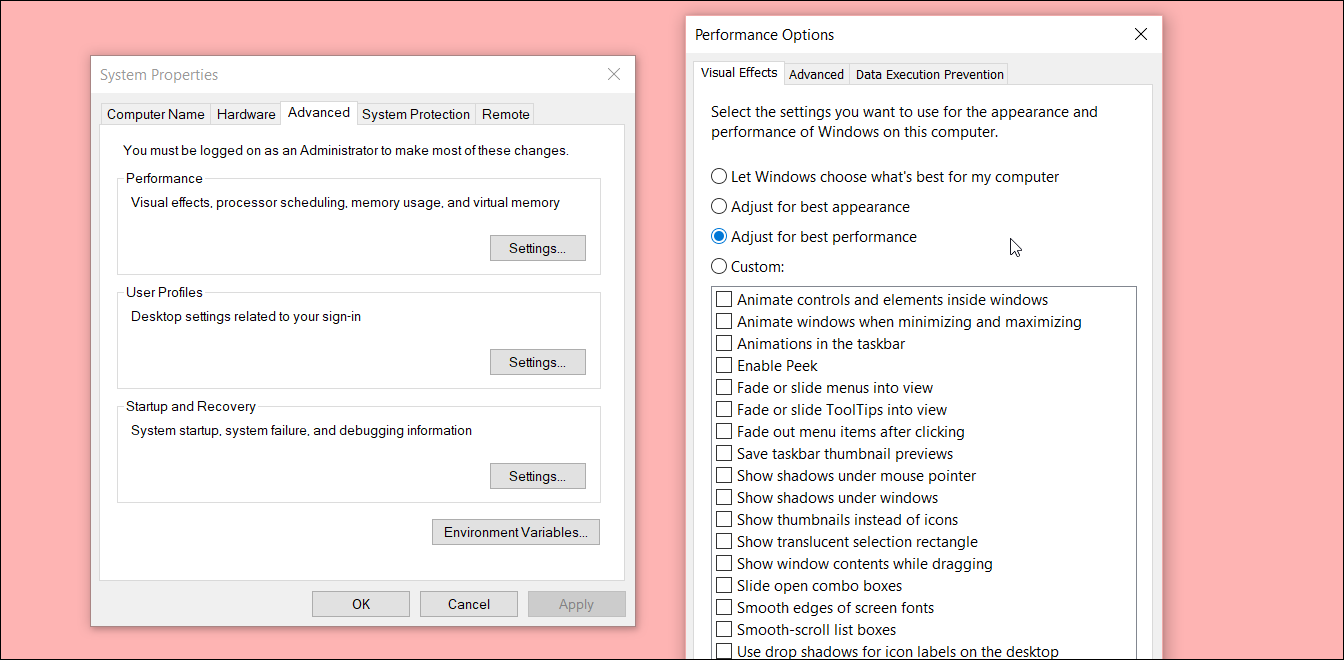Windows 10 automatically hides the taskbar when detects that you have switched to fullscreen mode on a browser, media player, or a videogame. This helps avoid distraction and focus on the task at hand. But sometimes, the taskbar will continue to show, even in fullscreen. If you are experiencing this issue, here are a few quick fixes to try.
1. Restart Explorer.exe
File Explorer is a file manager application built into the Windows OS. And while better File Explorer alternatives are available, using Windows' built-in tools works fine for the average user. The Explorer.exe process is responsible for the functioning of File Explorer and most of Windows UI, including the taskbar.
While this may change in the future, it explains why File Explorer glitches can affect the taskbar's performance. Fortunately, a quick restart of the explorer.exe process can help you fix this annoying issue with the taskbar.
To restart the File Explorer process:
- Right-click on the taskbar and click Task Manager. Alternatively, press Win + X and open the Task Manager from the WinX menu.
- In the Task Manager, open the Process tab, and locate the Windows Explorer process under apps.
- Right-click on Windows Explorer and select Restart. Your screen will go blank or dim momentarily as the File Explorer restarts.
Launch any app in fullscreen mode and check if the issue is resolved. If not, disable the taskbar lock to see if that helps fix the problem.
2. Disable the Taskbar Lock
In Windows 10, you can lock and unlock the taskbar to prevent it from being moved or resized. Unfortunately, enabling this option can cause the taskbar to malfunction and appear when apps are launched in fullscreen mode.
To disable taskbar lock, right-click on the taskbar and check if Lock the taskbar option is checked. If it's checked, click on it to uncheck the option and turn off the taskbar lock. Once disabled, try to open your browser or media player in fullscreen to see if the taskbar has disappeared.
3. Repair Your Browser or Media Player
If the taskbar acts weird while using a specific browser or multimedia app, try repairing the app causing the issue. App-related bugs and glitches can prevent the taskbar from working normally.
Many Windows apps come with a built-in troubleshooter that you can access from the Control Panel. To repair compatible desktop apps:
- Press Win + R to open Run.
- Type control and click OK or press Enter. This will open the Control Panel.
- Go to Programs > Programs and Features.
- From the list of installed apps, right-click on the app that is not working in fullscreen mode.
- Select Repair or Change and follow on-screen instructions to repair the app. Not all apps have a repair option, so if you don't find one for your app, skip this step.
Automatic app repair will look for missing or corrupt program files and replace them with new ones. After the repair is complete, launch the app and check for any improvements.
4. Install Any Pending Windows Updates
Windows updates usually contain bug and glitch fixes along with performance improvements. Updating your Windows version to the latest available build can help you fix issues with system apps and features.
To check if you have any Windows Updates pending, go to Settings > Updates & Security > Windows Updates. Next, click on Check for updates to scan for available updates. On metered connections, you will have to manually click on the Download button to install updates.
5. Hide the Task View Button in the Taskbar
Task View is a virtual desktop system introduced in Windows 10. It is a handy feature, and you can access it from the taskbar using the Task View button. Interestingly, hiding the Task View button on the taskbar can help you fix a taskbar that's showing up in fullscreen applications.
To hide the Task View button, right-click on the taskbar and uncheck the Show Task View button option. To access Task View without using the button, press the Win + Tab shortcut to create and move between virtual desktops.
6. Enable Auto-Hide in Windows 10
You can get around the problem of the taskbar not hiding in fullscreen mode by enabling auto-hide. When turned on, the auto-hide feature will automatically hide the taskbar unless you have a use for it.
To automatically hide the taskbar:
- Go to Settings and open Personalization.
- Open the Taskbar tab from the left sidebar.
- On the right side, toggle the switch for Automatically hide the taskbar in the desktop mode option to enable auto-hide.
To view the taskbar again, hover the cursor over the taskbar's original placement. Usually, this is at the bottom of the screen. The taskbar will then pop back up again for you to use.
7. Turn Off Visual Effects in Windows
Windows' Visual Effects can sometimes conflict with others applications and prevent them from working normally. As you might have guessed already, this includes your taskbar. The Visual Effects feature is a known cause of YouTube fullscreen mode not working properly. Try disabling it on your system to see if that helps fix the problem.
To turn off Visual Effects:
- Press Win + I to open the Settings menu.
- Open System and then click on the About tab from the left pane.
- Locate the Related Settings section and click on Advanced System Settings.
- Click on Settings under the Performance section.
- In the Visual Effects tab, select Adjust for best performance option.
- Click Apply and OK to save the changes. Click OK on all the open windows as well.
Disabling visual effects will turn off graphics details for your PC. Now, restart your computer and check if the taskbar hides in fullscreen mode.
4 Workarounds to Temporarily Hide Taskbar in Fullscreen
If you still can’t get rid of the taskbar in fullscreen, here are a few workarounds recommended by Windows 10 users on several tech forums.
1. Try Minimizing or Maximizing the Apps
Click on the app icon in the taskbar which still displays the bar while in fullscreen. When it minimizes, click on the app icon again to maximize the app. Try to minimize and maximize the fullscreen app window a few times. Going back and forth a few times seems to have worked for many users.
2. Pin Your App to the Taskbar
If it is not already pinned, right-click on the app you want to use in fullscreen mode, and select Pin to taskbar. Then, open the pinned app in fullscreen, and the taskbar should hopefully not bother you again.
3. Disable Start Menu Customization Utilities
You can replace Windows 10 Start menu with third-party applications. However, these customization tools sometimes can conflict with the taskbar functionality. Disable all the third-party Start menu customization app installed on your PC and check for any improvements.
4. Change Taskbar Location
Alternatively, if you don’t want to auto-hide the taskbar, try changing its position. To do this, go to Settings > Personalization > Taskbar. Scroll down to Taskbar location on screen and click the drop-down. Select any position, and the taskbar will instantly move from its default location.
Bid Goodbye to Taskbar in Fullscreen
When the taskbar appears in fullscreen mode, it can be annoying and ruin a perfect gameplay session or movie night by blocking subtitles. Fortunately, there are a few ways to stop this otherwise useful dock from appearing unnecessarily on your screen.

